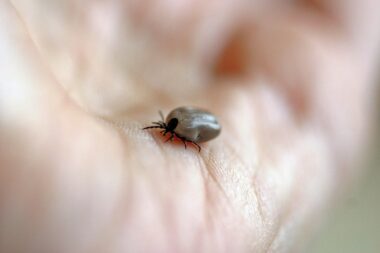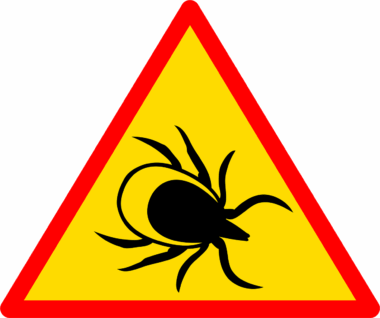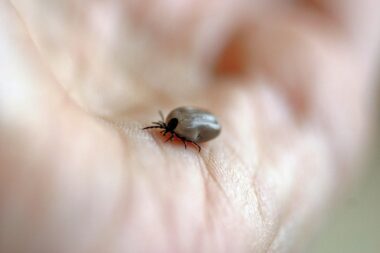The Importance of Tetanus Shots After a Cat Bite
A cat bite can lead to various infections, including the severe risk of tetanus. Tetanus is a bacterial infection caused by Clostridium tetani, found in soil, dust, and animal feces. When your cat bites and breaks the skin, the bacteria can enter your body and cause painful muscle contractions, particularly in the jaw and neck. If not treated promptly, tetanus can lead to serious health complications, including respiratory failure and even death. This makes it essential to recognize the importance of getting a tetanus shot after any cat bite, especially if the cat is unknown or not up-to-date on its vaccinations. The Centers for Disease Control and Prevention (CDC) recommends that adults receive a tetanus shot every ten years. However, if you suffer a deep puncture wound from a cat bite, you may require a booster shot sooner. Consulting your healthcare provider immediately after the incident can help determine the best course of action for your specific situation. Remember, prevention is key and timely intervention can save you from severe consequences.
Aside from tetanus, cat bites can also expose humans to various other infections. Cat saliva typically contains harmful pathogens, including bacteria like Pasteurella multocida and others. These bacteria can lead to cellulitis, an infection of the skin that can cause redness, swelling, and pain. If left untreated, cellulitis can spread and lead to more severe health issues. Symptoms include increased warmth in the area, pus formation, and fever. Additionally, cat bites may introduce the risk of cat scratch fever, caused by Bartonella henselae bacteria. Symptoms resemble those of a flu virus, featuring fever and swollen lymph nodes. To minimize these risks, it is essential to seek medical attention after a cat bite, particularly if the wound is deep or exhibiting signs of infection. Your doctor may prescribe antibiotics or recommend a tetanus booster. Prompt cleaning of the bite site with soap and water is crucial in reducing infection risk. Taking immediate action enhances your chances for a full recovery without further complications.
Recognizing Infection Symptoms
Understanding the symptoms of cat bite infections is vital for your health. After a bite, the first signs may include redness around the wound, swelling, and tenderness. If these symptoms persist and worsen, other indicators may appear, such as pus drainage, increased pain, and a rise in body temperature. Fever often reveals an internal response to an infection, signaling that your immune system is fighting against pathogens. If you experience these symptoms after a cat bite, monitor them closely. It is also essential to keep an eye on the overall condition of your limb or affected body part. Any development of extended redness or hardening around the wound may indicate bacterial spread. Prompt medical evaluation of these signs is necessary, as untreated infections may lead to more serious complications. In severe cases, hospitalization may be required for intravenous antibiotics or surgical intervention. Your health is paramount, so don’t hesitate to visit your physician if you feel something is amiss. Early recognition can lead to timely treatment and prevent serious health risks.
Preventing cat bite infections involves several proactive measures. First and foremost, properly cleaning the wound can significantly reduce the risk of infection. When bitten, rinse the area with soap and warm water immediately. Afterward, apply an antiseptic and cover the wound with a clean bandage. Maintain a close watch on the wound for several days, looking for any signs of infection. Another preventive measure is ensuring your cat receives regular veterinary check-ups and vaccinations, particularly against rabies and other infectious diseases. Keeping your cat’s teeth and claws trimmed can also minimize the risk of deep bites. Regardless of preventative efforts, know that accidents can happen. If your cat begins to show aggressive behaviors such as biting, consider behavioral training or consult your veterinarian about potential underlying conditions. Lastly, educate yourself on how to interact safely with cats. Understanding cat body language can prevent unwanted incidents. Keeping these strategies in mind can help promote a safe and healthy relationship between you and your feline friend.
Importance of Vaccinations
Vaccinations are an essential aspect of cat ownership, contributing to both feline and human health. Cats should receive their routine vaccinations, particularly against rabies, to protect against zoonotic diseases. Rabies is a deadly virus that affects the nervous system and poses a significant risk to humans through bites. Ensuring your cat is up-to-date with its vaccinations will help reduce the risk of transmitting infections to other pets and humans. Besides rabies, other vaccines protect cats from diseases such as feline leukemia and feline distemper, which can compromise their immune systems. Furthermore, encourage pets to stay indoors, as this limits exposure to wild animals that may carry infectious diseases. Regular veterinary visits include assessing vaccination history and administering necessary boosters. Besides just protecting your cat, actively managing its vaccination regimen demonstrates your commitment to responsible pet ownership. Be proactive in discussing with your veterinarian whether your cat is adequately protected against various diseases. Prioritizing vaccinations is beneficial for your cat’s well-being and can drastically lower the risk of cat bites and associated infections among humans.
Cat bites should never be underestimated, regardless of how minor they appear. Cat bite wounds can seriously affect vulnerable populations such as children, the elderly, or those with weakened immune systems. Their susceptibility to infections makes it even more crucial to seek immediate medical attention after any cat bite. Often, prompt treatment can significantly reduce potential health risks. Be mindful that even seemingly small lacerations or scratches can become infected if not managed properly. Assess the bite area regularly for any changes, and don’t hesitate to contact your healthcare provider if any concerning symptoms arise. As a responsible pet owner, ensure your household understands the risks associated with cat bites. Providing proper training at home can help children learn appropriate ways to interact with cats, minimizing the chances of bites. During social visits with other pets, supervise any interaction to avoid aggressive behaviors. With proper education and care, you can ensure a safer environment for both your pet and household members. Remember, knowledge and precaution can go a long way in preventing serious health concerns.
Conclusion
Understanding the risks associated with cat bites is vital to maintaining human health. Always seek treatment after a cat bite, considering the potential for both tetanus and other infections. Educating yourself about infection symptoms, proper care, and preventive measures fosters a safe atmosphere for you and your pet. The association between pet health and human health underscores the significance of vaccinations and regular vet visits. Focus on encouraging safe interactions and understanding how to handle a cat appropriately. Vigilant observation and timely intervention cannot be overstated when addressing a cat bite. Maintain an open dialogue with your veterinarian about preventative care measures and follow essential guidelines for handling bites. Protect yourself, your family, and your feline friend by learning about endemic risks associated with cat bites. Prevention and education can forge the path toward a harmonious relationship between humans and cats, minimizing health risks for everyone involved. Let’s celebrate the companionship of our feline friends while ensuring a safe and healthy environment.





